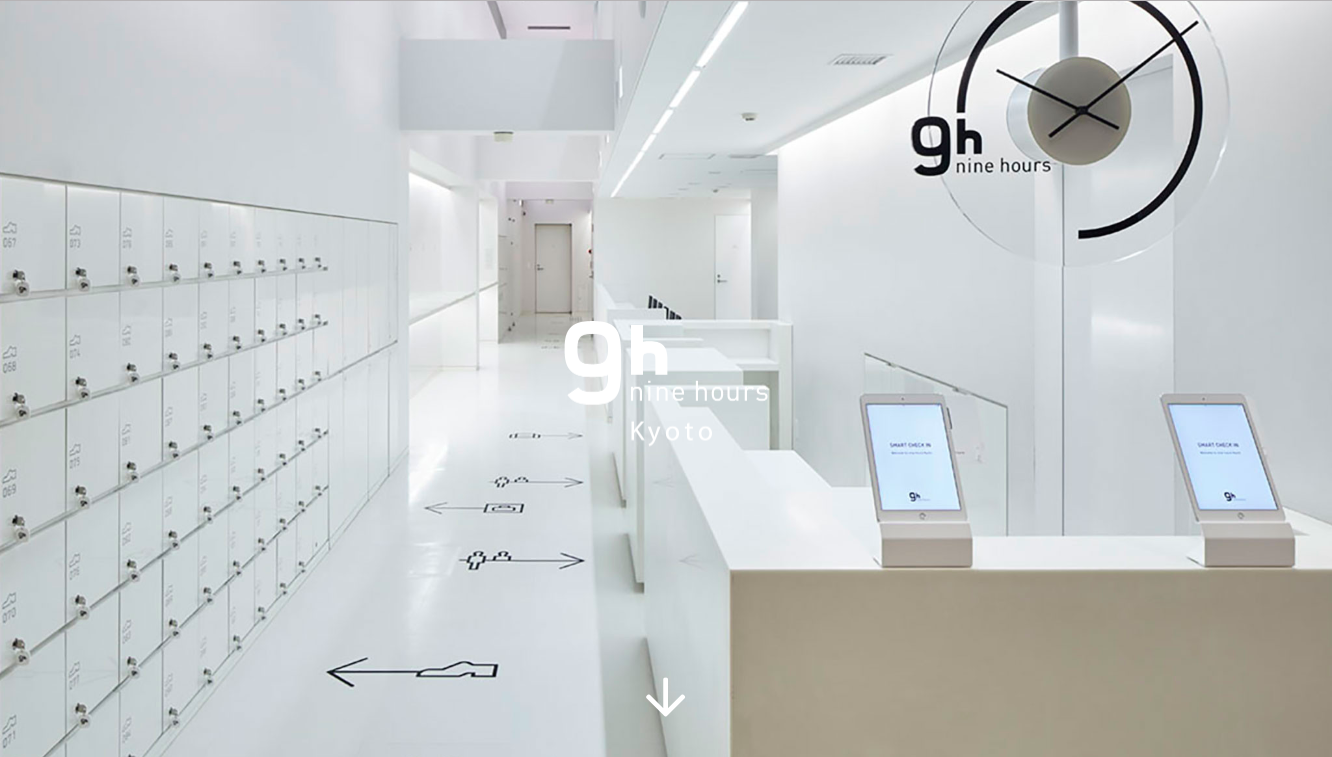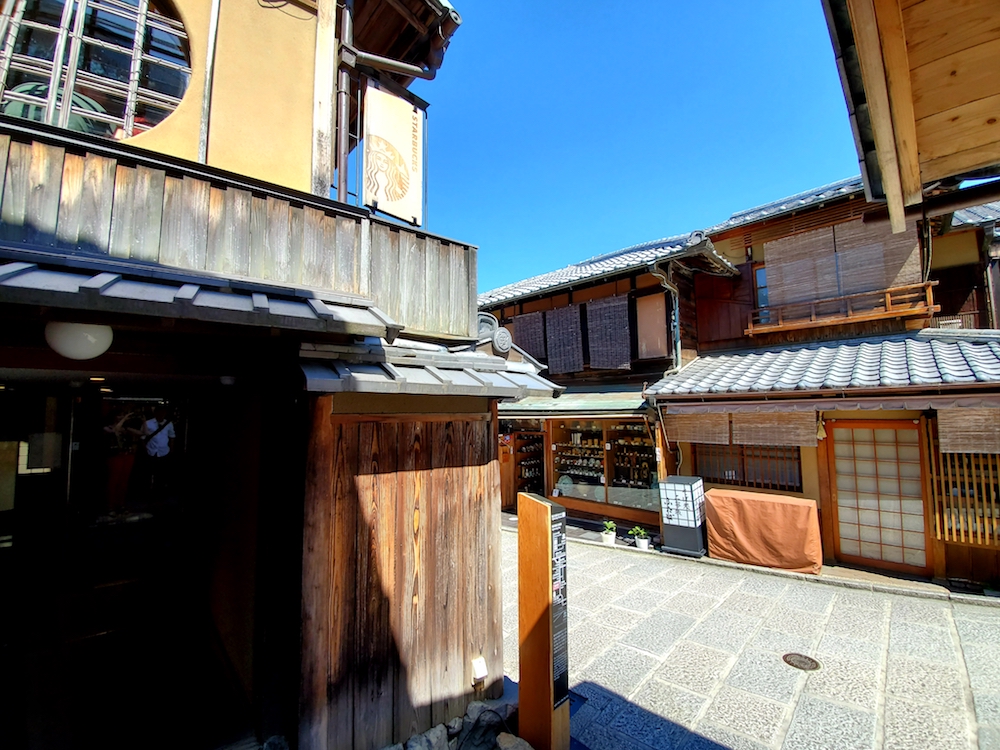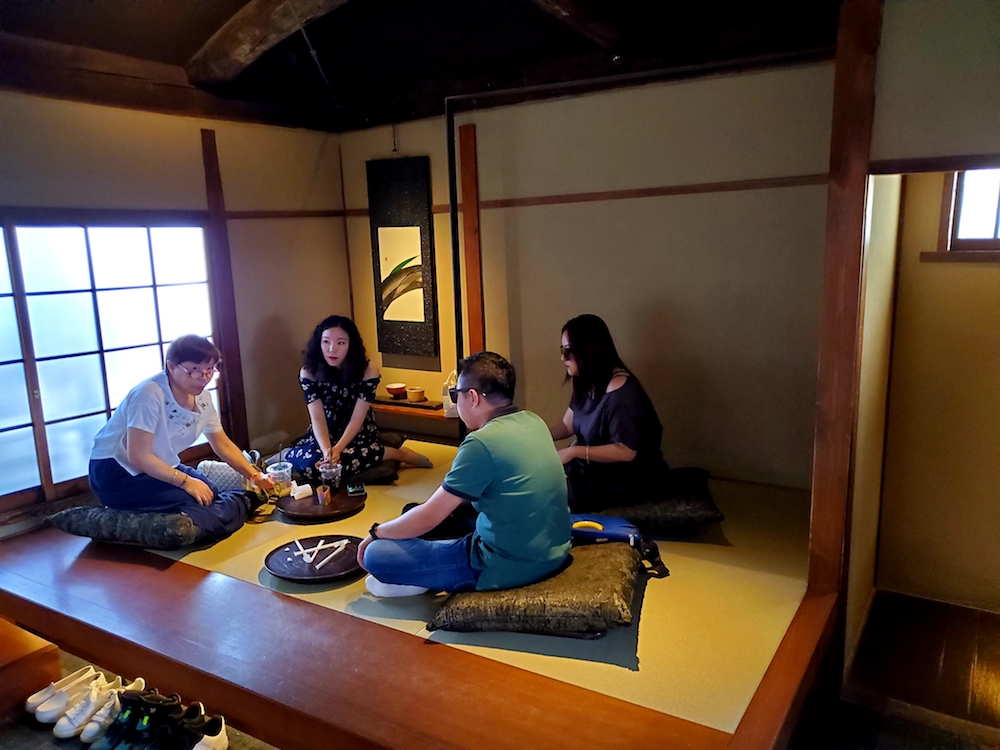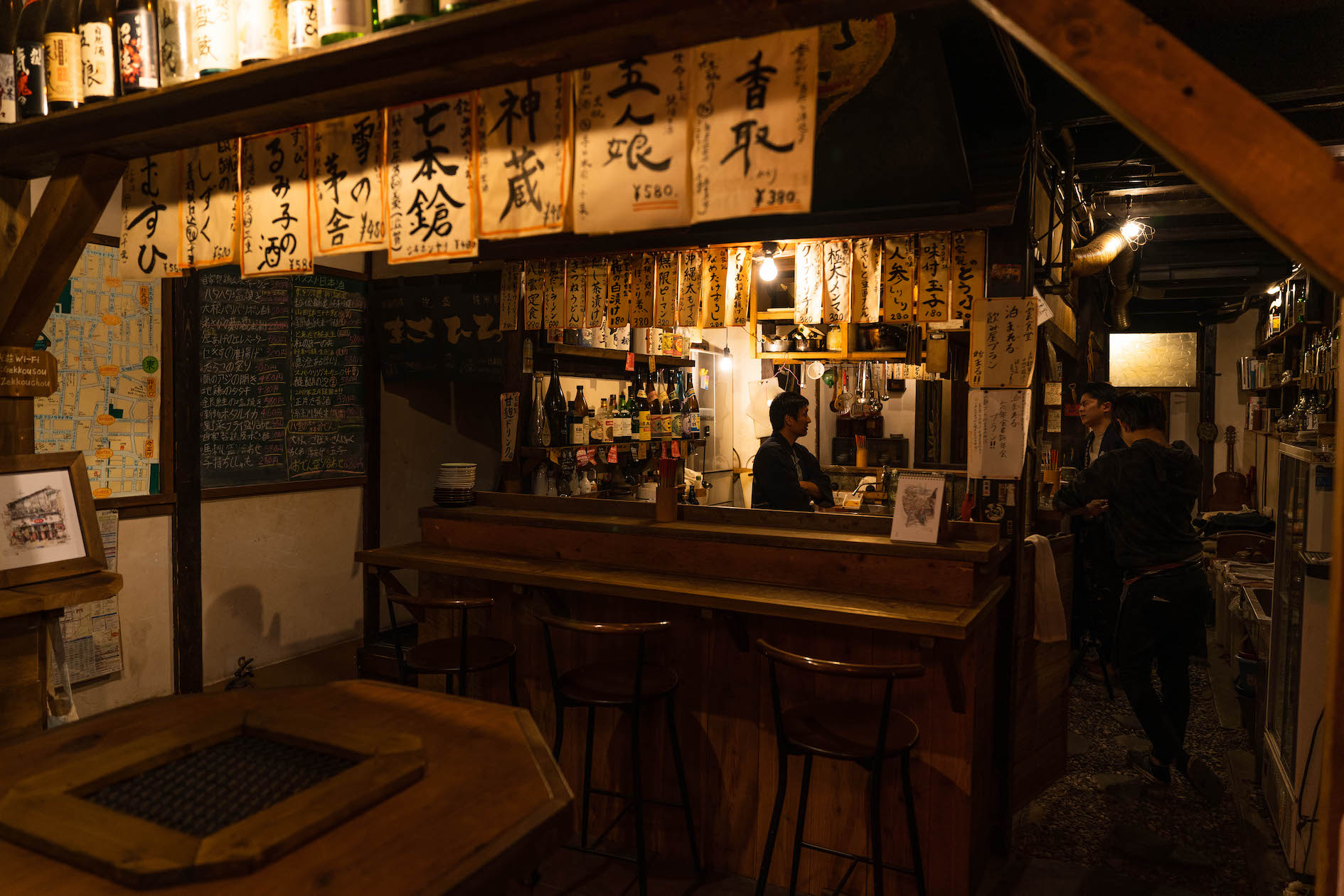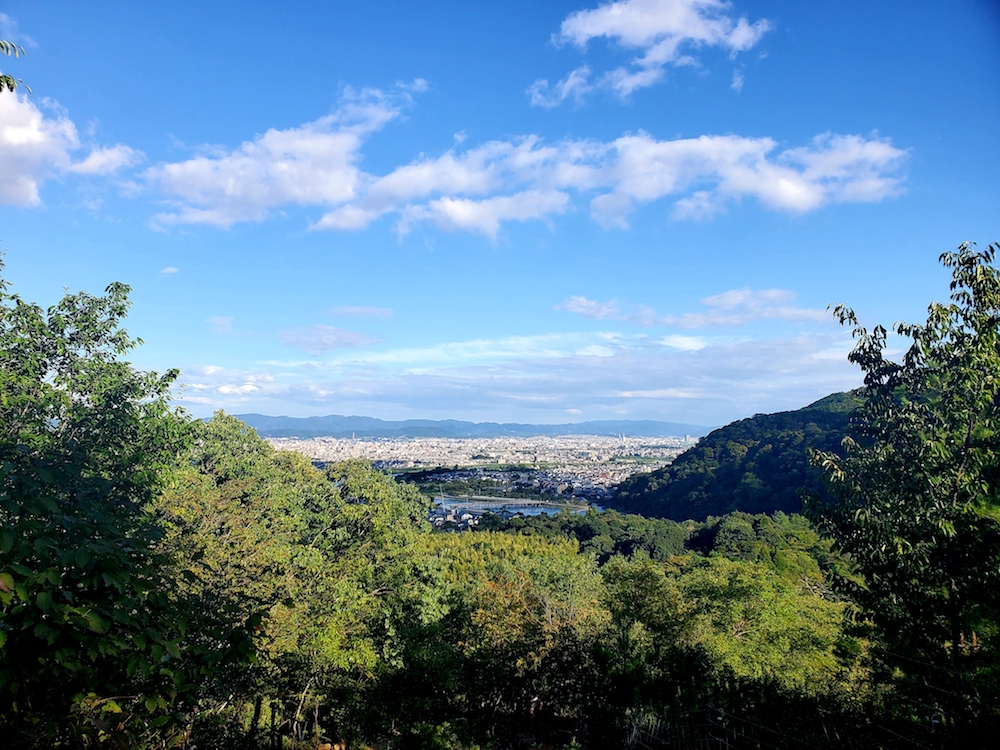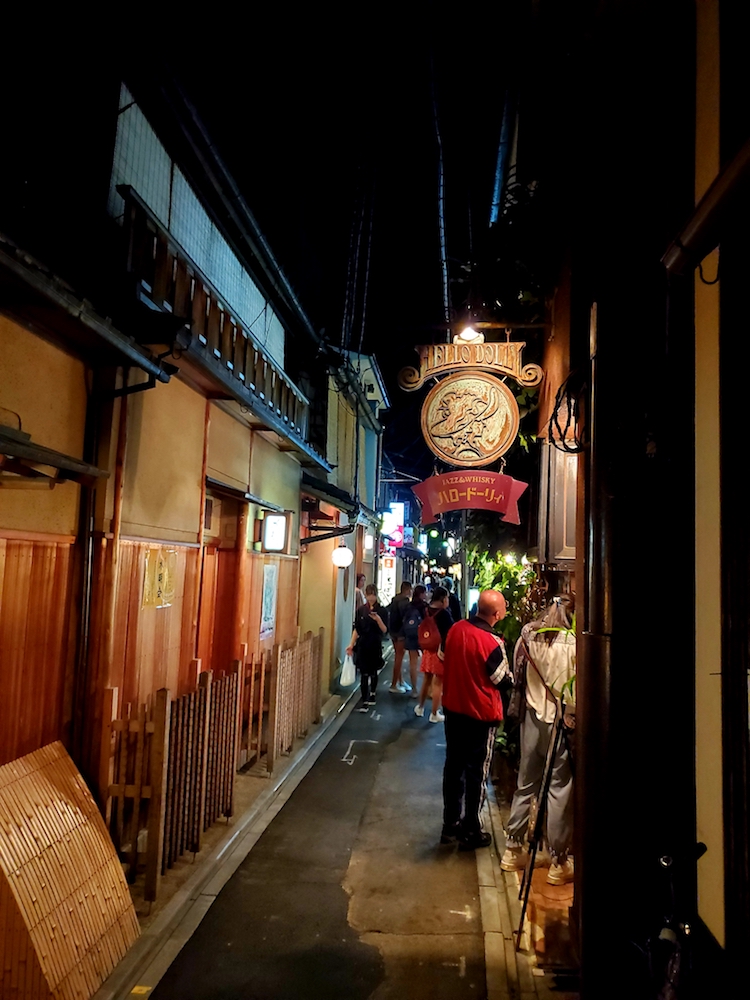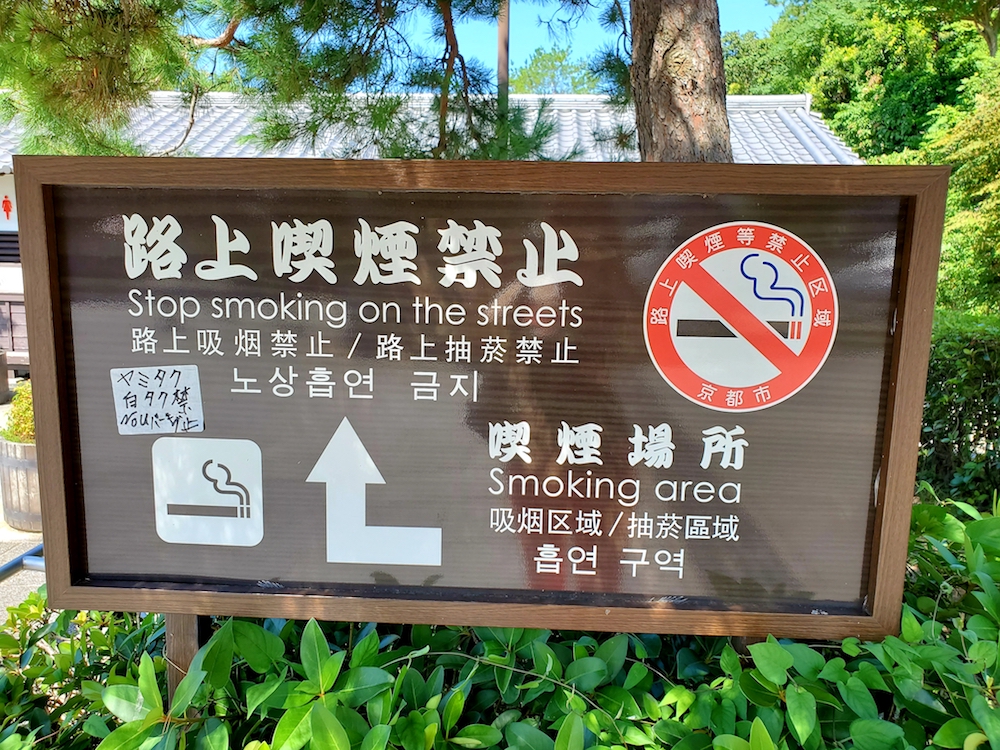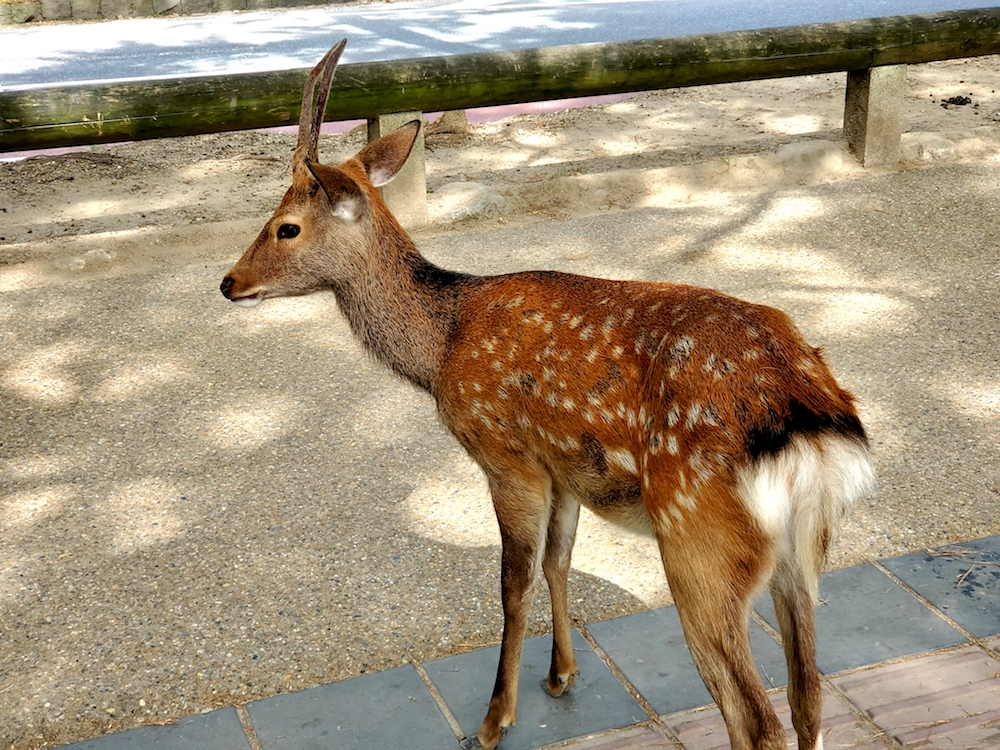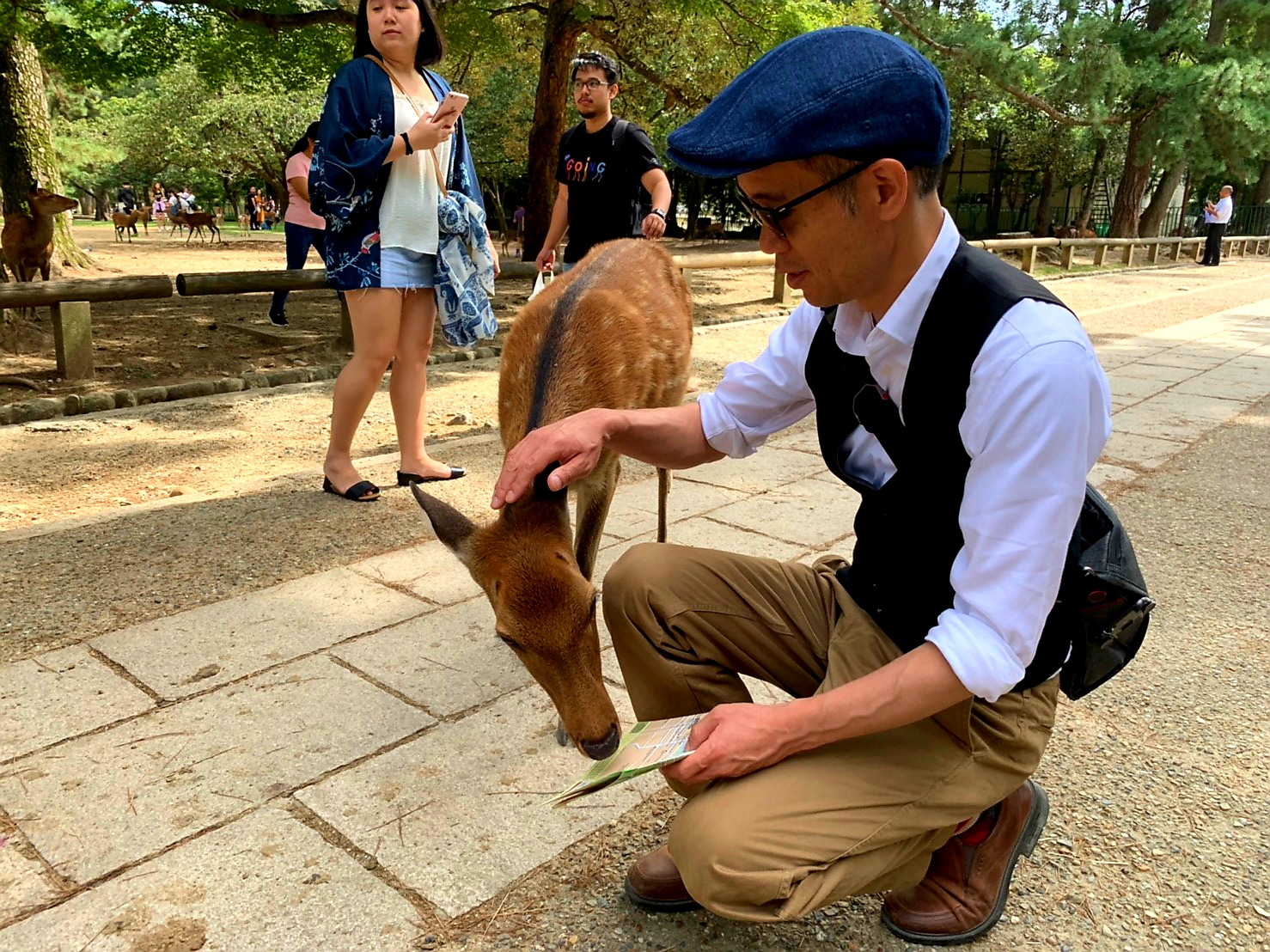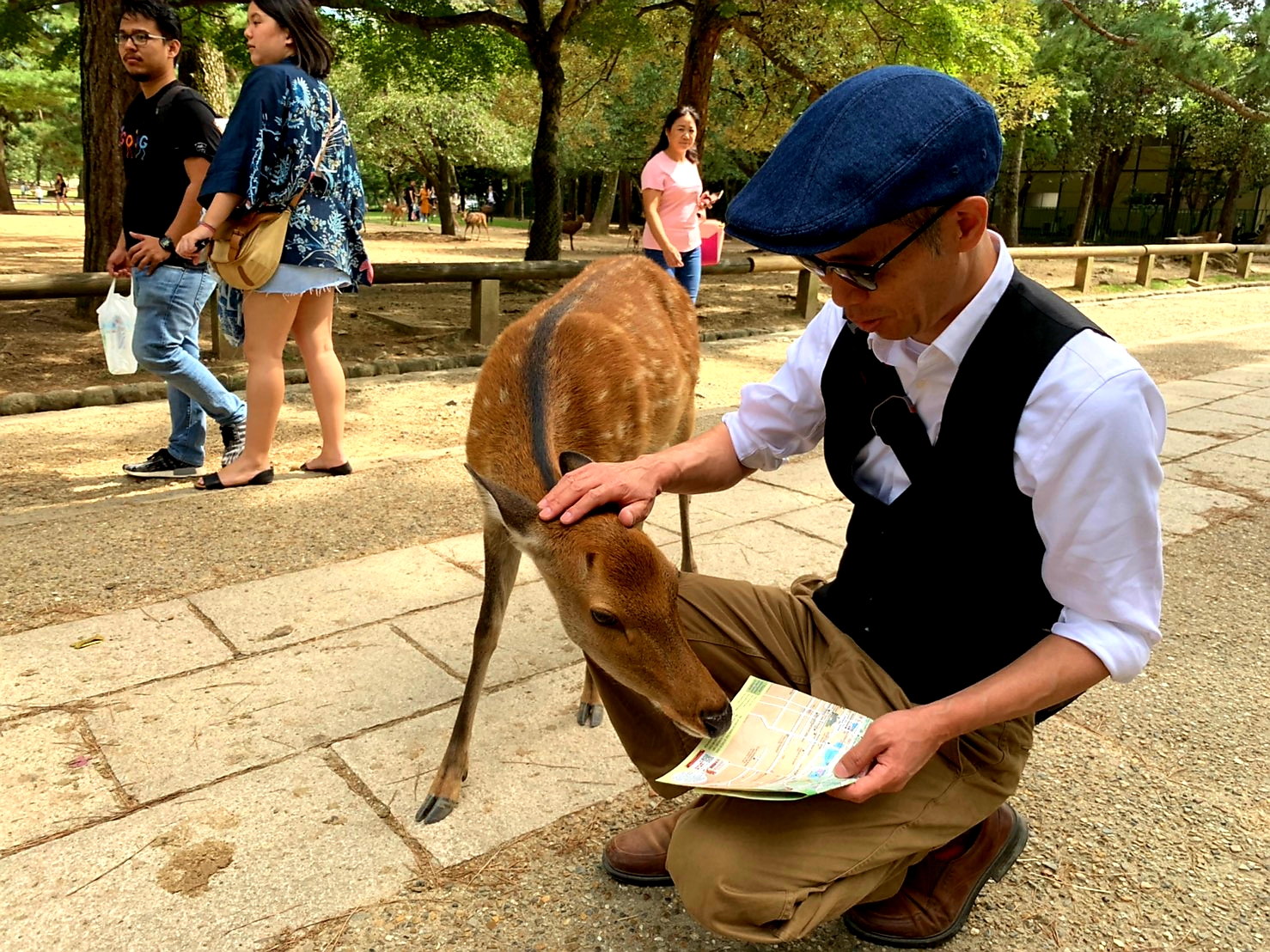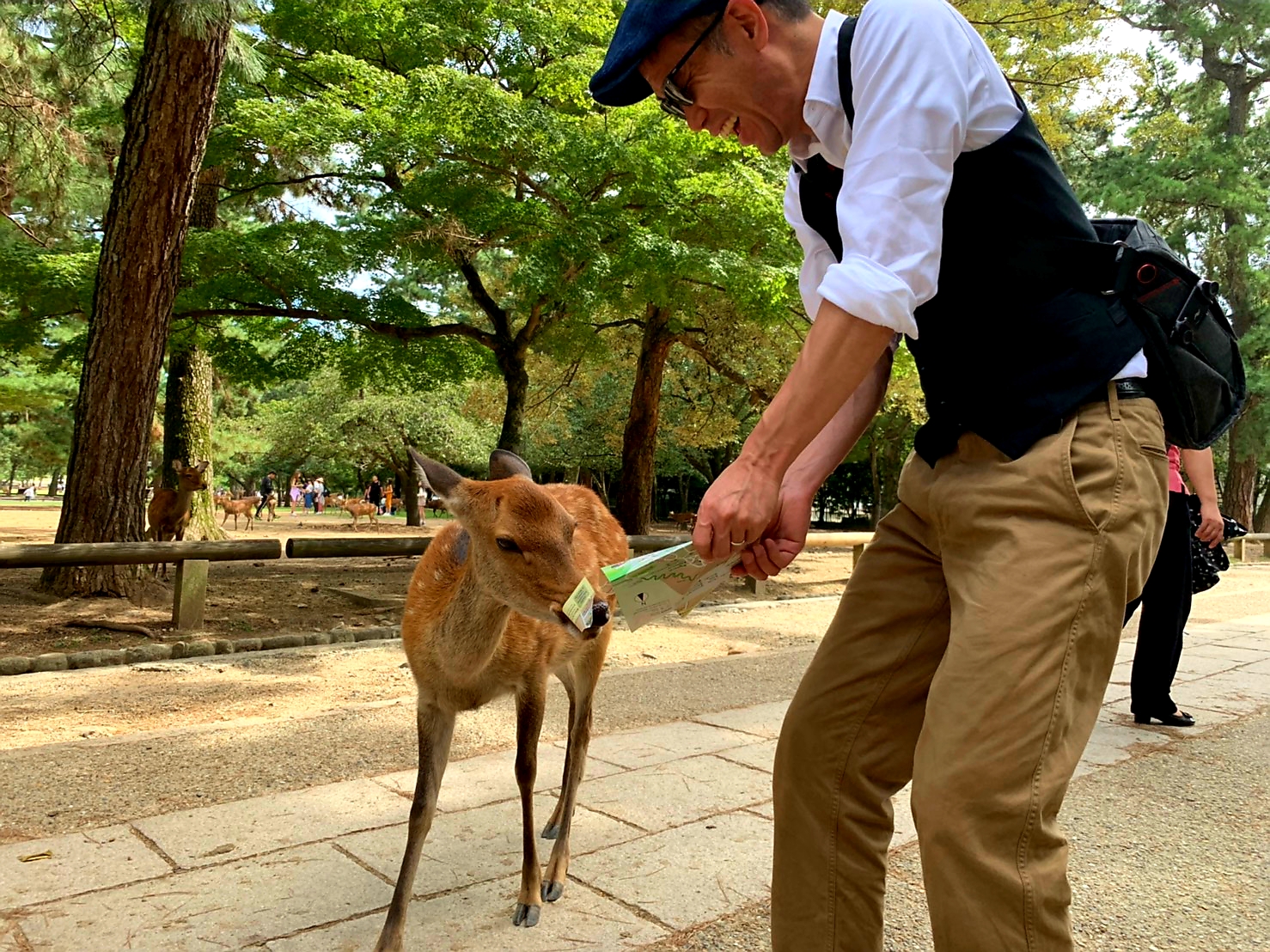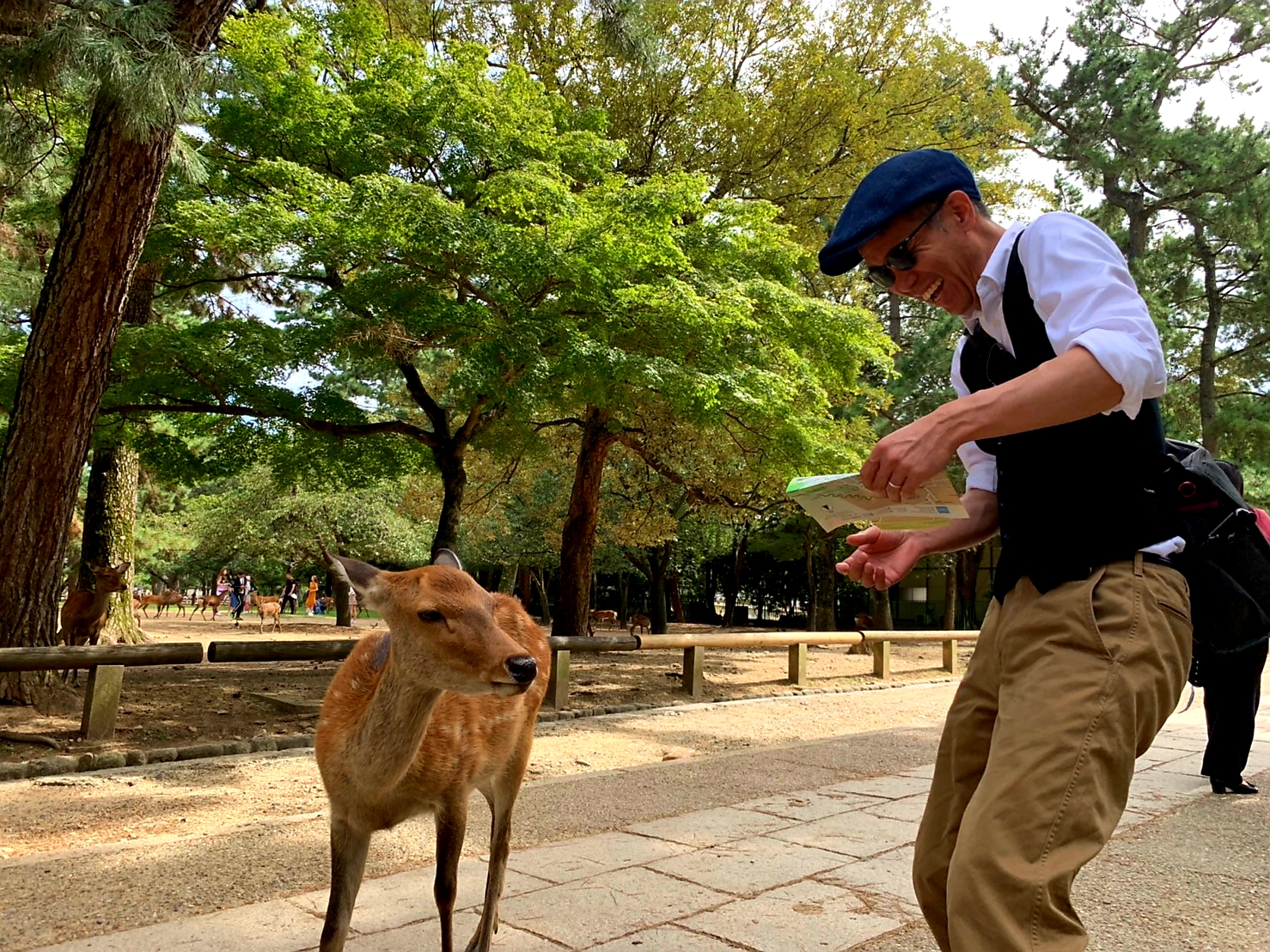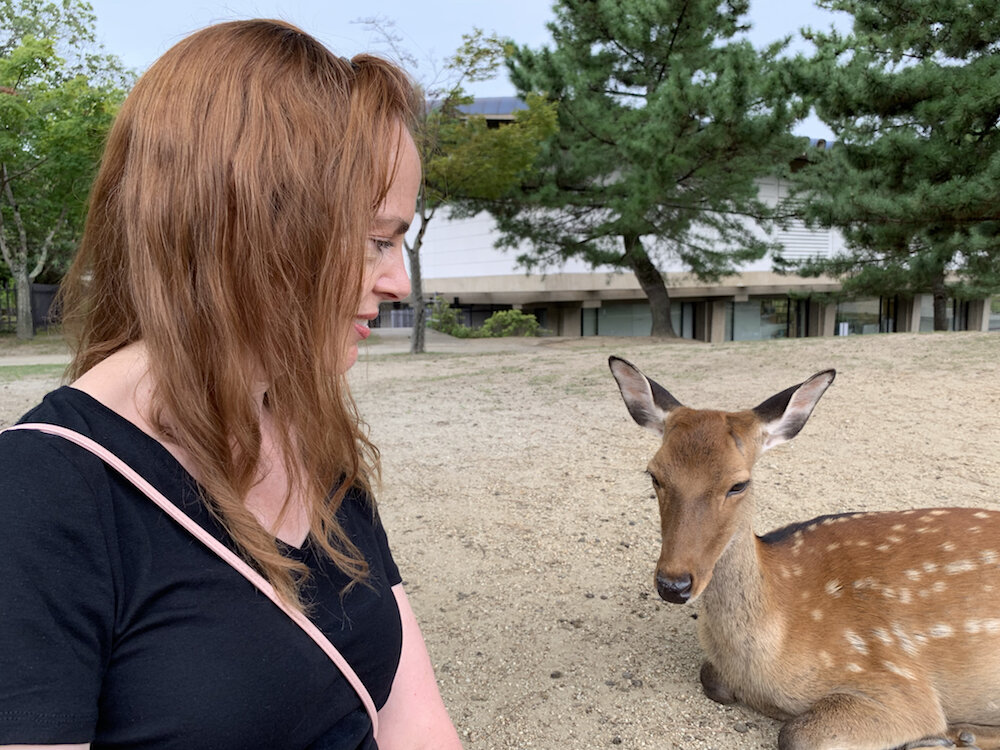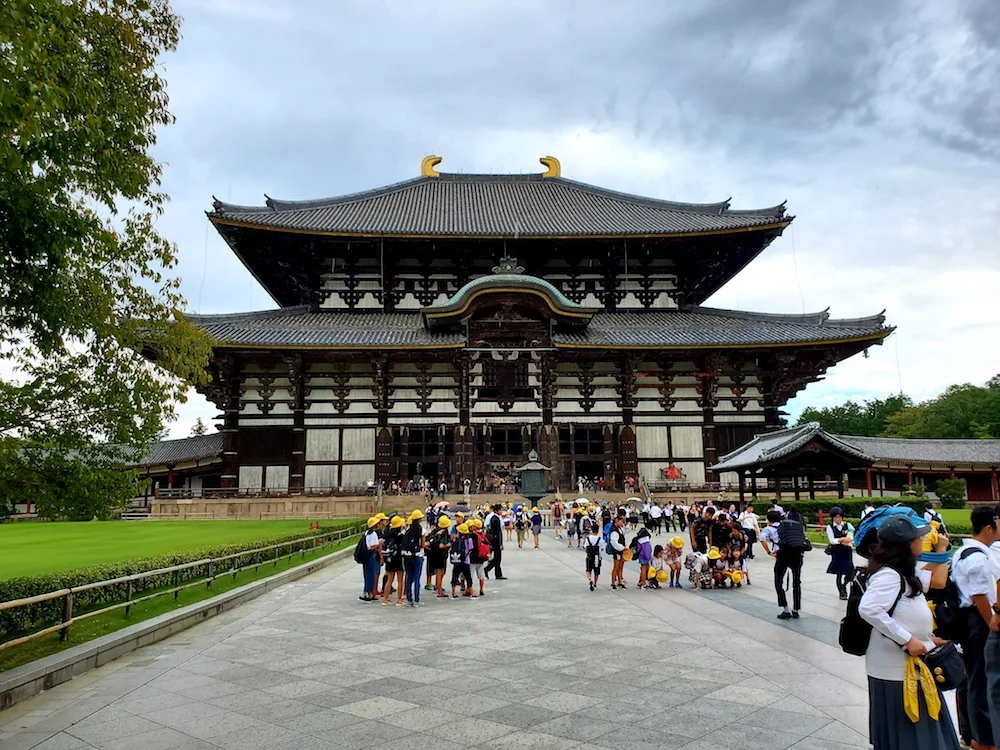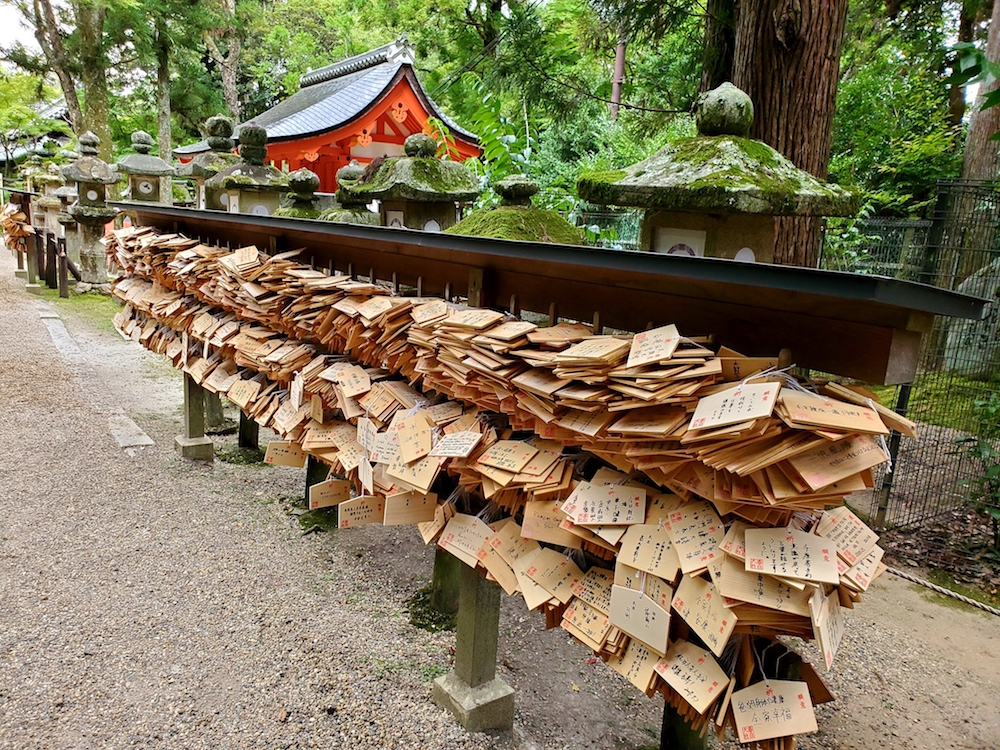After an uneventful ten-and-a-half-hour flight from LAX with the perfect seatmate (he fell asleep as soon as he sat down, woke up for meals, and passed out immediately afterwards), I arrive at Haneda Airport in Tokyo, Japan. Suddenly, I am in a whole new world: the signs are all in mysterious Japanese characters (a combo of logographic kanji and syllabic kana), the P.A. announcements are equally exotic to my ears, and for once my white skin and honey-colored hair is a minority.
日本へようこそ!
The customs line snakes back and forth across an auditorium-sized room (my best guess is 1,500-2,000 people — oh you read that right!) but it moves as fast as an Olympic swimmer gunning for the gold. I would come to learn that the Japanese are incredibly neat and organized and, thus, efficient. I don’t think I ever stood in line; I always strolled in line.
After zipping through customs, I stop at a bathroom and, not paying attention to the different symbols on the stall doors, find myself staring at, essentially, a hole in the floor that is surrounded by an oblong porcelain frame, like a toilet seat that has been squashed down to the ground. What the hell, I think. I said I wanted an adventure. Good thing I’m a runner, because without strong quads, I’d still be stuck in a squat, trying to figure out how to say “help!” in Japanese.
Tokyo
My old friend Richard is waiting for me in Arrivals and I hug the bejesus out of him, so happy am I to see him. We hadn’t seen in each other in 8 or 9 years, got together for coffee in Vancouver last year, and then he suggested I visit Japan with him and his wife (who, as it turns out, couldn’t join us). We take a 25-minute subway train to Shinigawa City, which is a special ward of Tokyo (a ward in Japan is a subdivision of a large city that has municipal status; special wards of Tokyo are administrative units governed similar to cities) and check in at the Toyoko Inn (Shinagawa Station, Takanawa Exit).
Toyoko Inn offers slippers and a shoehorn in every room!
Except for one night, we stayed at Toyoko Inns across Japan, and all were consistently cute, clean and new, and the staff were all friendly, polite and helpful. The “business traveler” rooms are quite small, but oh-so-efficient: each one offers toothbrush, toothpaste, comb, razor, shampoo, conditioner, soap, moisturizing face mask, towel, hair dryer, cotton kimono-styled pajamas/robe, slippers, shoehorn, tea, plus mini fridge, safe and shelf with a variety of religious books, and a complimentary breakfast buffet. All this for an average price of $65 USD.
A typical toilet/bidet in Japan.
Also, I never met a toilet in Japan that didn’t make me want to take a photo: they are all fancy toilets/bidets with variations to the “massage,” “ass” and “random washing” settings (or so Google Translate interprets them), and a button that when pressed emits music and nature sounds to cover up the, er, noise of your business.
Sign seen in hotel: The emergency stairs are open from 7 a.m. to 10 a.m. Please take a use at this as well.
Are the Japanese so efficient that all emergencies only occur between 7 and 10 am?
Quick dinner, drinks and non-stop catching up, and then we retire early. After being up for 24 hours, I hope for a solid 9-10 hours of sleep, but get a mere 4 instead, awakening at 3 a.m. and lying there optimistically until 7 a.m. Finally, I get up and venture out by myself to find a 7-Eleven ATM (the best place to withdraw cash in terms of exchange rate and ample locations), as Japan is still largely a cash-based society. Even with Google Maps, I can’t find it, so I ask a man “Sebun-irebun wa doko desu ka?” (Where is the 7-Eleven?) and not only does he understand me, but I understand his directions!
On the way back to the hotel, the overcast sky starts to drizzle so I pop into a Starbucks and the reason is twofold: one, to get out of the humidity (90F/30C + rain = frizzed out hair), and two, to compare the Japanese Green Tea Latte with the American version. I order a “Talu matcharate, matcha o roku sukūpu kudasai” (Tall matcha latte, six scoops of matcha please) which causes the cashier to repeat that several times to a disbelieving barista. “Takusan?” (A lot?) I ask with a grin and they all nod and laugh. Turns out that the Japanese version of my favorite drink is made with better-quality matcha powder (or at least it tastes so) and they prepare it in the proper way (you’re not supposed to heat it up beyond 175F/80C, so they don’t steam the matcha with the milk; they pour the hot milk into the matcha), thus it was fairly strong — but still delicious!
By the way, when you order food at Starbucks in Japan, they serve it to you on a tray on real dishes with a wet nap and a polite nod! In fact, everywhere they serve food — plane, coffee shops, bars — they first offer you a heated cloth to wash your hands and refresh your face.
Kyoto
Shinkansen (“bullet train”) from Tokyo to Kyoto.
We take the Shinkansen (i.e. “bullet train”) from the station right by our hotel to Kyoto, a 3-hour trip (despite what the map above says). By the way, you can buy a 7-, 14- or 21-day Japan Rail pass, but you must purchase it outside of Japan (find locations and info here).
For our first night, we stay at Ninehours Kyoto, a capsule hotel, also known as a pod hotel (a fancy, clean, quiet type of hostel).
Ninehours capsule hotel in Kyoto (image source).
When Richard had first mentioned it, my adventurous spirit immediately said “Yes!” But now, after a total of 4 hours of sleep in the last 48 hours, my latent claustrophobia kicks in. If you ever want to feel like you are on a space station (think 2001: A Space Odyssey), stay at this place. The front lobby is pristine white and minimalistic, and directions are laid out on the floor and walls. We are early, so we check in, leave our luggage, and go out in search of coffee and food.
Kyoto is not the small, old-world village I was expecting; instead, it is a city of 1.4 million residents (to compare, Tokyo has 13.9 million, Los Angeles has 13.1 million, and Vancouver has 2.5 million). We are staying downtown, where it is definitely busy and modern, but since Kyoto was “spared from large-scale destruction during World War II, its pre-war cultural heritage has mostly been preserved.”
We go to Inoda Coffee for lunch — a great place with dark red velvet curtains and upholstery, dark mahogany everywhere and very serious waiters in white button-downs and black trousers — and then walk around this part of town.
Inoda Coffee Shop, Kyoto (image source).
Richard at Bar K in Kyoto.
That night we wind up at a bar called Bar K, another fantastic place with great ambiance and decor: dark wood, warm, low lighting, and a lush green garden in a small central courtyard visible through large windows. Also, like most bars we would visit, it is small: just 8 counter seats and 8 table seats.
I find that beer, wine and liquor in Japan are very reasonably priced, compared to Los Angeles, anyway. Usually ¥500-1,000 ($5-10 USD) per drink at a bar.
Finally, we walk back to the capsule hotel with some trepidation (on my part). Here are the bullet points of my experience:
Shoes off at the front door and put in small locker, and slippers provided. You are handed a mesh bag with towel, pajamas, toothbrush and paste.
No one speaks English, but the pictograms and arrows on the floors and walls make up for that.
Luggage goes in locker on 3rd floor and sleeping pods are on 5th floor (men and women’s lockers and pods are on separate floors).
Sleeping pod area is dimly lit and pod is fairly spacious, considering (room enough to sit up, mattress almost the size of a twin bed and two small shelves for your phone, book, etc.). A window-shade type of curtain pulls down and locks for privacy.
Showers are on same floor as luggage, and shampoo/conditioner/soap are provided in each shower stall.
Sinks and vanity are open, so you are brushing your teeth or fixing your hair next to strangers. Turns out, this is the part that makes me most uncomfortable, not the sleeping pods.
Sleeping pods at Ninehours capsule hotel (image source).
All in all, glad I did this — but glad to get back to a regular private hotel room, too!
The next morning we check in to another Toyoko Inn which is on a main street in downtown Kyoto, but all the side streets around it are narrow old-school alleyway/roads lined with (usually) small, local shops through which pedestrians, bicyclists and cars expertly maneuver without slowing down or hitting anyone.
I enjoy watching the street choreography from a cafe:
Sign seen in Kyoto: Yamamoto Coffee — Have a good taste for your life.
We go out to explore the city, including Nishiki Market, a covered 400-year-old marketplace that is “studded with stalls offering all manner of Japanese edibles” and goes on for blocks and blocks and blocks! I see a restaurant called “Spaghetti & Cake Second House,” Shake Shack (a rare American fast food joint), Matcha Cafe, a clothing store called “Hysteric Glamour” and Ueshima Coffee House, a cafe whose logo is “precious coffee moments.”
Kamo River in Kyoto.
Streets of Kiyomizu-dera Temple in Kyoto.
We walk through town, over the Kamo River and into Old Kyoto (I don’t think it’s called that, but it consists of a small village of roads leading up to the temple), which is gorgeous and saturated with history, despite the hordes of tourists with stupid selfie sticks refusing to speak a word of Japanese. We walk up hills and stairs and narrow cobblestone paths that wind through shops and cafes, and every once in a while a delivery vehicle comes through and we all have to squeeze over to the side.
At the top of the hill is Kiyomizu-dera, a 1,200-year-old Buddhist temple that is known as a “Kannon Reijo” (“reijo” means “holy place”) and “the figure of Kannon embodies your thankful hearts — feelings of gratitude for coming into this world, your tranquil daily lives, and your loved ones. In other words, worshiping Kannon means taking a hard look at your true self.” It’s beautiful — but closed for repairs. So much for a thankful heart.
Kiyomizu-dera, a 1,200-year-old Buddhist temple in Kyoto.
We also can’t help but take a look inside the Starbucks in this village, which has to conform to local building laws on the outside, and has adopted the Japanese ways on the inside:
Starbucks in Kiyomizu-dera village.
Inside of Starbucks in Kiyomizu-dera village.
My eyes light up when I see that they sell Starbucks Via Matcha (individual packets, which they don’t carry back home), and I practically swipe the whole shelf into my arms.
Drool-worthy Matcha Via at Starbucks in Kyoto!
The next day we take the subway/bus to the northern part of Kyoto to see temples, gardens and a bamboo forest — which is closed.
Sign seen at Bamboo Forest: “Closed for repairs from June 2017 to closed.”
No matter, because there are always more temples, gardens and even another bamboo forest to see. Temples and shrines here are like coffeeshops in North America: every time you round a corner you bump into one.
A temple in Kyoto.
We visit a few more, which may or may not have included Zuihō-in Temple and Kenkun Shrine — I’m not kidding about the number of them: there are 2,000 temples and shrines in Kyoto, which is 319.6 mi² — in between walking around Richard’s old neighborhood. Since it is 90F/30C, we stop often for coffee, water, lunch or anywhere that offers respite from the heat. Turning a corner in a small residential neighborhood, we see a great little ramen cafe that looks like an abandoned shack and promptly stop for lunch. Turns out the place is called Gekkousou, and it’s a “moonlight guesthouse” (a hostel renovated from a traditional Japanese house) with a pub on the main floor called Izakaya, popular with the university students in this area for the high quality/low price of food and drink.
Many of the smaller temples and shrines are empty, save for one or two people other than ourselves, but one of the big ones — Kinkaku-ji (“Temple of the Golden Pavillion”) — is crowded! We walk along the path that winds around the temple and the lake upon which it sits, through the edge of the surrounding forest, and voila! into a “historic commercial vending area” (sarcastic quotations mine) where I am compelled — compelled, I tell you! — to purchase a sachet of matcha powder with gold leaf specks, no doubt painstakingly peeled off the temple by an ancient Buddhist servant and preserved for a thousand years until such time when it could be thrown into a bag of tea and sold to a crazy tourist.
Kinkaku-ji Temple in Kyoto.
Richard, Selena and two friends outside of Gyoza Bar Anzukko in Kyoto.
Back to the hotel to shower and then we go out to meet R’s friends at Gyoza Bar Anzukko, another small, dark, cozy and utterly delightful restaurant, where they serve only gyoza (a thin-skinned Japanese dumpling) — heaven! For the first (and probably last) time, I try lemon gyoza and camembert cheese gyoza. His friends, an older man who speaks no English and is an American film buff, and a mid-aged woman who speaks some English and is vivacious and friendly, are wonderful hosts who keep ordering and insisting I try Japanese beer and sake, both of which are quite tasty. (I’m normally not a beer drinker — or coffee drinker or noodle or rice eater — but whenever I travel I always eschew my eating rules for a taste, literally, of the culture I am visiting.) I speak only toddler-level Japanese (“where is bathroom?” “I am hungry” “delicious” “I am not American, I am Canadian”), so R is constantly and smoothly translating both ways without creating a break in the conversation, God bless him.
Another night of too little sleep despite my desperate need for it and the Mt. Fuji-sized bags under my eyes. In the last 4 days I’ve gotten a total of 15 hours’ sleep — an average of 3.75 per night. R keeps waiting for me to suddenly nod off into my ramen, but I’m beginning to think I’ve discovered my superpower. I walk 8-10 miles/13-16 km each day, and often in my espadrilles (a canvas shoe with a plaited fiber sole and solid wedge heel), I’m upbeat and I haven’t yet resorted to speaking gibberish (well, no more than usual). Not only do I not crash, but he’s the one who accidentally leaves his phone on the bullet train to Kyoto in our haste to disembark. For some reason I am certain that the train staff will find and return it (probably because a sleep-deprived state has also allowed me to tap in to my telepathic powers) — and bingo! they do!
Streets of Kyoto.
While R takes the train to Osaka to collect his phone, I wander around the ‘hood, meandering from the big city streets to the small-town alleyways. I see plenty of white-haired, wrinkled-faced men and women zipping through traffic on bicycles. I walk past an old man lovingly polishing his delivery van in his (outdoor, I’m assuming) slippers. I watch a man in a suit drop off his two young children with backpacks almost as big as them at a curbside pre-school (which looks like a large, colorful garage — although, come to think of it, maybe he was sending them off to work). I pop into Tokyu Hands, a 3-floor “creative life store” (essentially a stationery/craft store) to buy some postcards and drool over the James-Bond-of-stationery gadgets.
Sign seen in lobby of public building: Please take your trash home with you.
Boy, they’re serious about their no littering policy.
R returns and we take the subway to Arashiyama, about 4.5 miles/7 km west of downtown Kyoto, stopping for lunch right near the station at Musubi Cafe, a place “that promises to provide everyone with something that is kind to the heart and body.” They keep their promise; the food is delicious. They also provide inspiring quotes next to the toilet, such as “What the words are reasoning.” I ponder that one for quite some time.
We cross a small bridge over the Katsura River and visit the Tenryuji Temple and Garden and the Hogonin Temple — but not before stopping at R’s favorite coffee shop, % Arabica, whose motto is: “See the world through coffee.” At first I think the percent sign is a typo, but no, it is part of their name, although nowhere on their website does it explain why. Speaking of their site, it is worth reading owner Kenneth Shoji’s philosophy statement; here’s a excerpt:
“So to create the best coffee possible, I borrowed money and bought a coffee farm in Hawaii. I also started trading green beans from around the world and became the sole-exporter of a Japanese roasting machine along with the distributor of one of the best espresso machines in the world…. We only live once, so let’s explore the world we live in, set goals, and enjoy our time together over an amazing cup of coffee.”
This is yet another cafe the size of a garden shed with no seating anywhere except for some waist-high stone walls lining the street, so we join some geishas and enjoy our coffee al fresco!
% Arabica
Sitting outside of % Arabica in Arashiyama, a Kyoto district.
By the way, these aren’t real geishas. If you buy or rent a kimono and sandals and wear it around town, you get discounts at many places — all to keep the culture alive. Not sure scrolling through Facebook on their smartphones counts as culture, though.
We stroll through the beautiful and awe-inspiring Arashiyama Bamboo Forest (a different one from the day before, the closed-until-we-decide-to-reopen-it one), which no photo can accurately depict.
Arashiyama Bamboo Forest, Kyoto.
View from near the top of Kameyama-koen Park in Arashiyama, Kyoto.
To get away from the mob of tourists, we walk up the path to an actual trail (note: the steeper the incline, the fewer the people — thank god). We keep climbing in an attempt to get to the top and admire the view of Kyoto, but around each bend in the path is simply more hill. Finally, we stop and take in the view, and I am reminded of why I like R so much: we are both dressed completely inappropriately for a forest hike — he in a tie and vest and me in an off-the-shoulder blouse and leather ballet flats — but that doesn’t stop us from walking anywhere our curiosity takes us.
As we head back down the “hilltop park,” we hear a girl or young woman screaming and wonder what horror has befallen her. But there was no horror; it was just the sound of monkeys at play! There are about 120 Japanese macaque monkeys living in the Iwatayama Monkey Park on the other side of the Katsura River (about .65 miles/1 km by foot).
Back down off the mountain/hill, we stroll through the streets of Arashiyama where I purchase a matcha face mask. And to answer your follow-up question, yes I am obsessed with matcha.
I find that in shops, restaurants, bars, etc. the staff are consistently attentive, friendly and helpful. Lots of “onegaishimasu” (please) and “arigatō gozaimasu” (thank you) accompanied by head nods. Also, they do not point; instead, they gesture with the full hand, fingers open, palm up. Their smartphones are always set on silent mode and they don’t talk on their phones in public — if they have to make or take a call, they step outside, but even that is rare. They generally don’t shriek and talk loudly in cafes and they don’t eat or drink on the sidewalk (don’t even carry around water bottles or coffee cups). I never heard a car horn honk or race down the street sans muffler. When on escalators, they stand to one side to allow walkers to move past them and when waiting for the subway or bus, they form perfect lines. In part because of all this, I feel very comfortable and at home here already, despite my lack of linguistic skills (although I wonder how much of that is due to being with R who is fluent in Japanese and familiar with Japan).
That night we head out to another place on R’s Kyoto bar bucket list — a rooftop bar called In the Moon. Lanterns and strings of white lights create a warm glow and we have a view of the city that is also aglow with amber lighting. We order our drinks at the bar and then sit at a high table right by the railing and enjoy great cocktails, conversation and ambience until the 14th-storey wind kicks up and drives us indoors. I had forgotten what it feels like to be cold!
In the Moon rooftop bar in Kyoto.
View from In the Moon rooftop bar in Kyoto.
We aren’t ready to call it a night, so we go back to Bar K, the quiet, dimly lit bar with the courtyard garden, ultra professional bartenders and excellent drinks.
Streets of Kyoto at night.
Selena at Bar K in Kyoto.
Maneuvering through the narrow, endless, crowded alleyways with small, easy-to-miss signs makes getting there a metropolitan version of The Hunger Games.
The next day we walk the Philosopher’s Path, a 1.25 mile/2 km-long “pleasant stone path through the northern part of Kyoto's Higashiyama district,” from Ginkakuji to Nanzenji. “The path gets its name due to Nishida Kitaro, one of Japan's most famous philosophers, who was said to practice meditation while walking this route on his daily commute to Kyoto University.”
Bridge at one of the temples along the Philosopher’s Path in Kyoto.
It’s a lot harder to practice walking meditation today, what with the crowds of heathens more interested in the cafes and shops along the way. I do, however, enjoy a sign that is politely aggressive: “Stop smoking on the streets!”
Politely aggressive sign along Philosopher’s Path in Kyoto.
After walking for a million years, we take the bus to Camellia Garden in the west part of Kyoto for a traditional tea ceremony, something I’ve been looking forward to for months! It is performed by a young man and young woman and is a lot more relaxed and fun than I’d imagined (being traditional, I thought: rigid). After chatting over “Kyoto’s finest sweets” and letting us know what to expect (and what to do/not do), they lead us into the tea ceremony room.
The whole ceremony is like art and meditation wrapped up in one — silent, mindful and visually intoxicating. Shogo, the man, prepares a cup of matcha tea for each of us, and just by watching him I find myself taking slower, deeper breaths and letting go of all extraneous thoughts. Behind him, the green garden is visible through the window, and the only sounds are the occasional tok, tok as he taps the matcha spoon on the edge of the ceramic mug.
The woman serves the tea to us and, after returning her bow, I raise the cup to my lips with both hands, inhale the earthy scent of matcha, and take a sip. Absolute heaven.
Traditional tea ceremony at Camellia Garden in Kyoto.
Traditionally prepared matcha tea at Camellia Garden in Kyoto.
Then Shogo instructs us on making the tea for each other, and we enjoy a second cup of matcha. And finally, when we are ready to leave, we find that they have already called a taxi for us, which is waiting on the street right outside. I can’t recommend this traditional tea ceremony enough!
Nara
Shinkansen (“bullet train”) from Kyoto to Nara.
Having been in Japan for nearly a week now, I notice that Google Maps has gone from giving me cities, streets and shops in English to part English/part Japanese, to now mostly Japanese. I’m also getting ads in Japanese on websites and YouTube, which is great because it’s a lot easier to ignore something in a language you don’t understand.
I take my usual morning alone-time ritual by walking to a nearby cafe for breakfast, journal writing and people watching. Then we check out of the hotel, store our luggage at the JR (Japan Rail) station in Kyoto, and it’s off to Nara for the day! I pop into a 7-Eleven at the train station — which is a fancy gift shop version! What the what?? — for a bottle of water and delight in all the different confectionaries, such as the chocolate that is for “temporary and psychological stress of clerical workers.” Crikey, do you need a doctor’s note for that? Also, I love that the train attendant bows before entering the car.
Nara is what I expected Kyoto to be: a small town. Still infested by tourists, but oh well. We walk towards Nara Park along a main thoroughfare and I point to an incredibly life-like statue of a deer standing on the edge of the sidewalk. “That’s no statue,” says R, and right on cue it moves!
A deer on the streets of Nara.
I look around and suddenly realize that the place — sidewalk and park — is teeming with deer!
Richard walking into a gang of deer on the streets of Nara.
They’re wild deer, though used to humans, and you can buy “deer crackers” to feed to them, but you’re instructed to then display your empty hands to show the deer that you’re “not holding out.” Something that Cracker Dude hasn’t learned yet.
R kneels down to pet a deer that immediately takes a bite out of the map that he’s holding in his other hand.
Click or tap on the right/left arrows to see the map-eating deer in action!
We walk through Nara Park to admire the shrines and try to avoid getting head-butted by gangs of deer looking for their next cracker fix. “As of July 2017 there were around 1,500 deer living in the park, and at least 164 people had been injured by them in 2017-2018. Most of them were tourists feeding the deer.” Hence this warning sign:
A warning sign about the deer in Nara.
With the warning in mind, I sit down next to the most zen — or introverted — deer and share a moment.
Selena and “Bambi” share a moment in Nara.
It starts to rain, but somehow that just makes this whole afternoon all the more perfect as we visit several shrines: Kōfuku-ji, Kasuga and Tōdai-ji (the largest wooden building in the world which houses a 50-foot/15-meter tall statue of Buddha).
Kasuga Shrine in Nara Park.
Tōdai-ji Shrine in Nara Park.
50-foot statue of Buddha in Tōdai-ji Shrine, Nara Park.
As we walk along the path, I see these wooden plaques attached to a fence-like contraption. R explains that you write your wish on the “ema” (the wooden plaques), and then during the Fire Festival they burn them all and when it goes up in smoke, your wish is supposed to come true.
Ema (wooden plaques) upon which you write your wish.
Delicious dessert (image source)!
We leave the park and walk through a residential neighborhood with narrow, deserted alleyway-roads in the drizzly rain and stop at a coffeeshop called Saezuri that boasts “a menu where you can enjoy Nara and seasonal ingredients in a comfortable space.”
Cute place, great coffee, very quiet. We talk books and movies over a mouth-watering dessert that we can’t quite figure out what it’s made of (figs?), but, as I said, “Whatever’s going on here, I like it.”
We take the train back to Kyoto Station, pick up our luggage, and then board another train to…Osaka!
Richard waiting for the train at Nara station.
Note: all photos taken by Selena Templeton or Richard Ii, unless otherwise noted.




